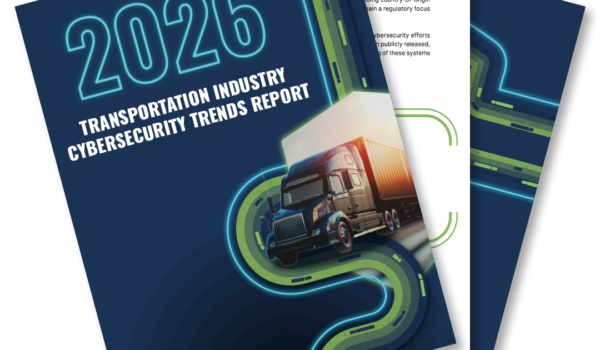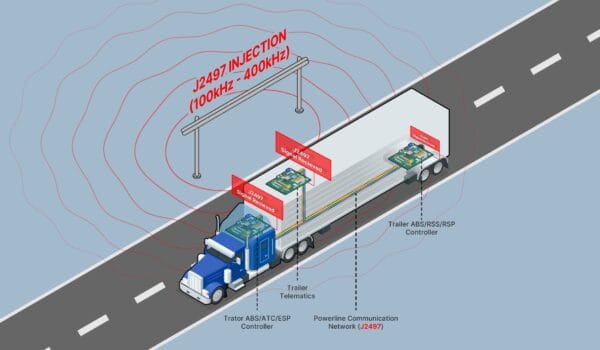If you’re a motor carrier, broker, freight forwarder, or intermodal provider, you’ve likely heard that you need a Standard Carrier Alpha Code (SCAC®). But once you get one, you might wonder: where exactly is my SCAC used—and why does it matter?
At the National Motor Freight Traffic Association, Inc. (NMFTA)™, we assign and maintain the SCAC system to help standardize communication and data exchange in the transportation and logistics industry, from truckload and less-than-truckload (LTL) to intermodal operations and port logistics. Your SCAC isn’t just a formality—it’s a critical operational identifier that plays a role in digital freight transactions, customs filings, and everything in between.
Here are 11 common places where your SCAC is used, and why getting it right matters.
1. Bills of Lading (BOLs)
Your SCAC appears on both paper and electronic bill of ladings (eBOLs) to identify the carrier transporting the freight. This helps ensure accuracy in routing, recordkeeping, and claims resolution.
2. EDI Transactions
SCACs are essential to electronic data interchange (EDI), including commonly used documents like:
- 204 (Motor Carrier Load Tender)
- 210 (Freight Invoice)
- 214 (Shipment Status)
- 990 (Load Tender Response)
Without an accurate SCAC, your freight data may be rejected, delayed, or misrouted.
Bonus: eModal
eModal platforms utilize SCACs to identify and track shipments electronically through EDI. eModal systems use these codes to streamline communication, track shipments, and facilitate customs clearance.
3. API Integrations
Modern digital standards like the recently launched Pickup Request and Visibility —developed by NMFTA’s Digital LTL Council—rely on SCACs for system-to-system communication. Your SCAC serves as a unique carrier ID in today’s API-driven freight exchanges.
4. Transportation Management Systems (TMS)
Nearly all major TMS platforms require a valid SCAC to match carriers to contracts, load boards, and rate engines. If your SCAC isn’t up-to-date, you may be missing out on available freight opportunities.
5. Freight Audit and Payment Systems
Shippers and 3PLs use SCACs to track carrier charges and reconcile invoices. A missing or incorrect SCAC can lead to payment delays or audit discrepancies.
6. Load Boards and Rate Marketplaces
SCACs are used on digital freight marketplaces and load boards to verify carriers and connect them with shippers. They are also often required to post or bid on loads. This helps maintain transactional integrity.
7. U.S. Customs and Border Protection (CBP) Systems
If you’re hauling freight across borders, you must use a valid SCAC in systems like:
- ACE (Automated Commercial Environment)
- AMS (Automated Manifest System)
- AES (Automated Export System)
CBP uses SCACs to identify carriers for entry/exit tracking and customs compliance purposes.
8. Uniform Intermodal Interchange Agreement (UIIA)
If you handle intermodal freight, a valid SCAC is required under the Uniform Intermodal Interchange Agreement (UIIA). The UIIA is a program of the Intermodal Association of North America (IANA) standardizes the interchange of intermodal equipment (like containers and chassis) between trucking companies, ocean carriers, and railroads, for efficiency and tracking purposes.
9. Retail and eCommerce Routing Guides
Many large retailers require carriers and 3PLs to have a SCAC on file to accept tenders or integrate into their transportation management workflows, and ensure delivery accuracy
10. Insurance and Claims Processing
SCACs are referenced in loss/damage claims, cargo insurance documentation, and litigation cases. It helps verify the identity of the transportation provider involved in the shipment.
11. Carrier Onboarding with Brokers and Shippers
Whether you’re working with a new 3PL or registering with a Fortune 500 shipper, you’ll likely be asked for your SCAC during the onboarding process. It’s one of the first identifiers checked to verify your operational status.
Why It Matters
Your SCAC is more than a code. It’s a digital credential that powers nearly every part of your operation. Especially as the transportation industry becomes increasingly digitalized, your SCAC plays an even larger role beyond traditional freight paperwork. Understanding where your SCAC appears, how it’s used, and ensuring your SCAC is valid and active helps reduce friction, improve compliance, and streamline communication across your supply chain.
Helpful Resources
- Apply for or renew your SCAC: scaccode.com
- Questions? Reach out to the NMFTA SCAC team at support@nmfta.org
- Want to learn how SCACs fit into freight digitization? Explore our Digital Standards Development Council (DSDC)






